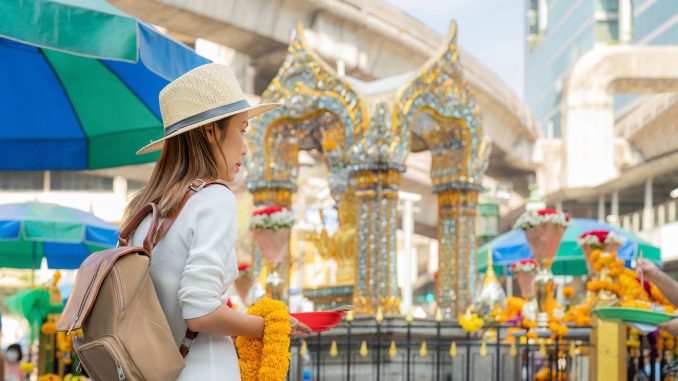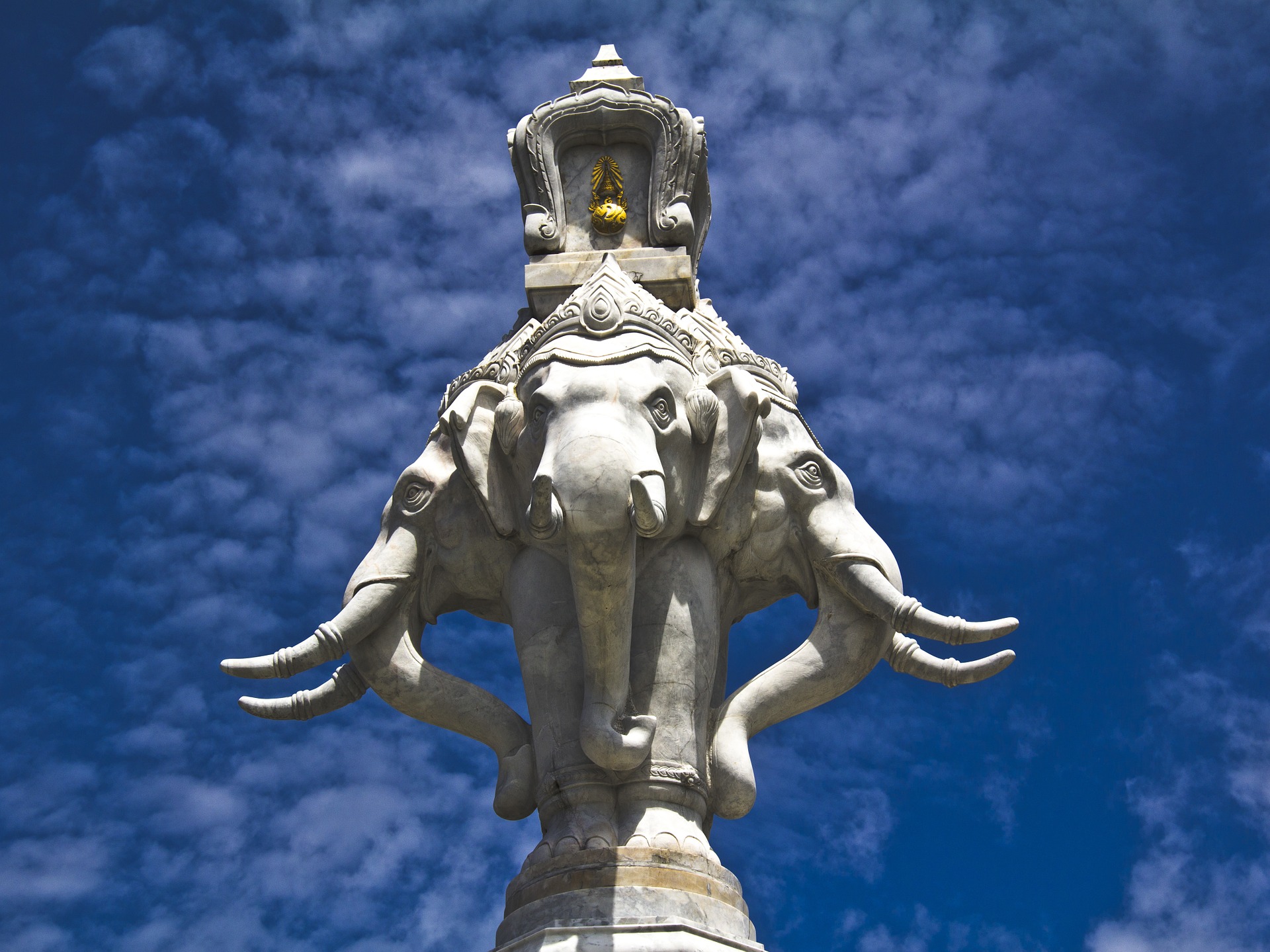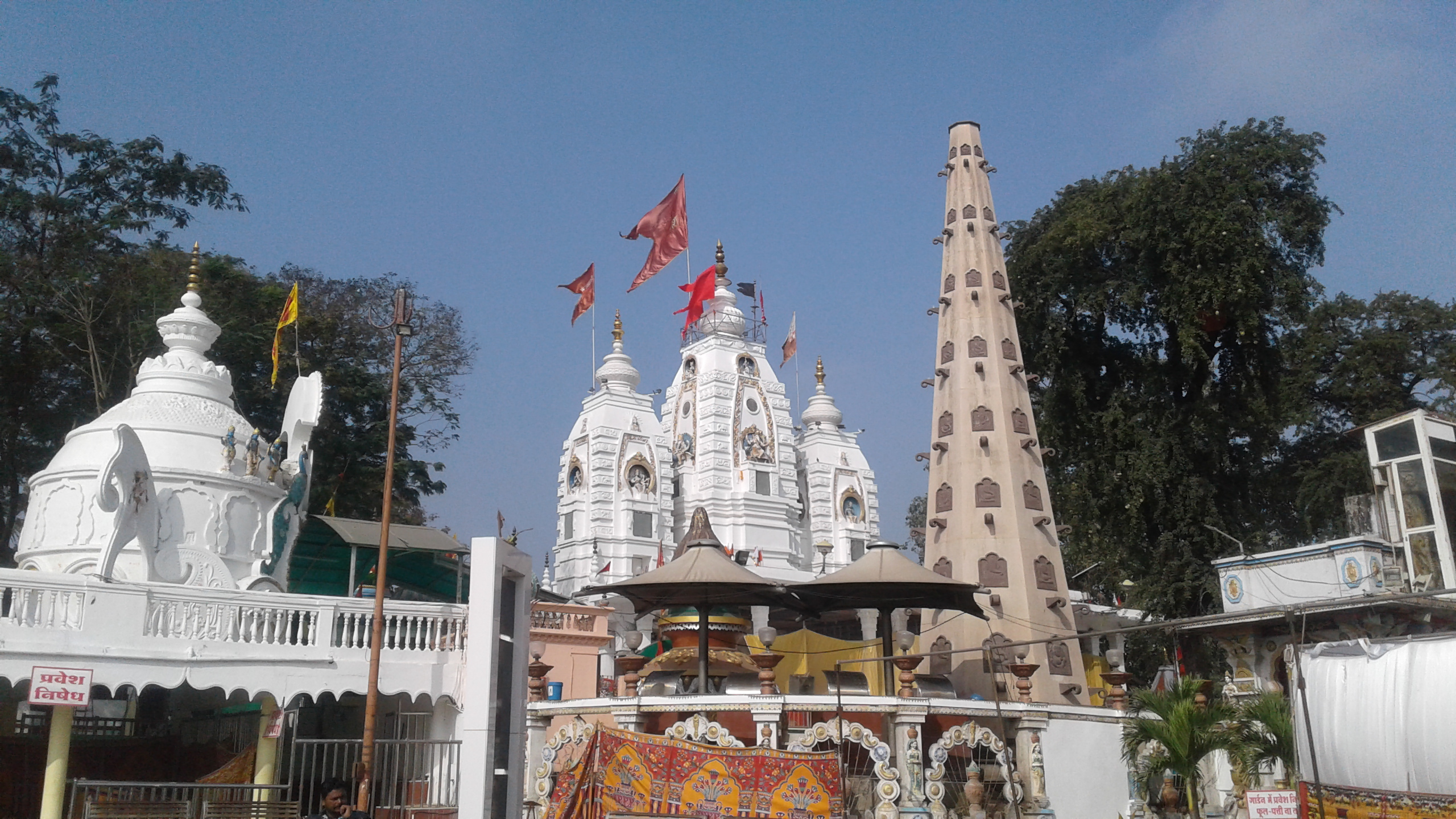
Ratchaprasong i.e. Rajprasang has the distinction of being the heart of Bangkok. Ratchaprasong is a busy business district. Its horizon is dotted with sky rail and sky walking paths. Stand in the middle of it and look in any direction, you will see tall buildings and grand markets. As soon as I got information about the series of Hindu temples located here, my eyes started searching for them in the sub-halls. Because I had accepted in my mind that temples cannot be located on the busiest main roads of Bangkok. But as soon as I looked at the map available for a walking tour of these temples, I realized my misconception. Following this map published by Ratchaprasong Chowk Trade Board, one day I reached Chitlom Aerial Station. I had a strong desire to experience the harmonious coexistence of commerce and spirituality in Bangkok.
READ ALSO: Hindu Gods and Indian Culture in Japan
Walking tour of Ratchaprasong in the heart of Bangkok
According to the belief of Bangkokians, these temples have the ability to fulfill all their wishes. Probably, it is the influence of this belief that every ordinary citizen of Bangkok stops for a few moments in front of these temples and prays in his mind. I experienced his devotion during this walking tour.
Come, let me also show you these seven temples located in Ratchaprasong.
Erawan Temple
This temple, named Phra Phrom in the local language, is famous by the name of Erawan Temple. This is the most popular temple among the seven pilgrimage sites of Ratchaprasong. This temple is dedicated to Brahma Dev, the creator of the universe. It would not be inappropriate to say here that I found similarities in the sounds of Brahma and Phra Phrom in the Thai language. Whenever someone talks to you about Brahma Temple being located only in Pushkar, then you can proudly say that his patronage extends to Southeast Asia. Erawan, this word is based on the name of Gajraj Airavat, the vehicle of Lord Indra. Although I am not aware of any relation between Airavata and Brahma. Probably this temple was named after the Erawan rest house located here because it was because of this rest house that this temple was built here. Erawan Temple is the largest temple of Ratchaprasong.
Statue of Brahma
The structure of the Erawan temple is like an open temple in the middle of which a bright, light, and four-faced statue of Brahma is installed. It is said that this statue has four sides, situated towards the four main directions. People believe that in this way Brahma takes care of the devotees located in all four directions.
The road in front of the temple is filled with flowers and incense stick vendors. The ideal offering by devotees includes 12 incense sticks, 4 candles, 4 jasmine or marigold garlands, and 4 gold leaves. Just like we circumambulate in Indian temples, similarly this temple is also circumambulated clockwise. While doing parikrama, 3 incense sticks, 1 candle, 1 necklace, and 1 gold leaf are offered to each side of the idol and the devotees express their wishes to the Lord. In the Erawan temple, when the wishes expressed are fulfilled, Brahma is thanked by organizing classical dance and music. Probably, for this very reason, many assembly halls were built in our temples.
The Saga of the Erawan Statue
This is a unique story. This pilgrimage site was built in 1958 when Erawan Rest House i.e. the present-day “Grand Hyatt Erawan” was being established. When several accidents occurred during the construction of this hotel, a Brahmin was called to suggest solutions. After inspecting this site, he suggested the establishment of a temple of Brahma here. Since that time this temple has been observing the devotees and providing them good fortune. My ears perked up when I heard the word Brahmin in Bangkok. On inquiry, it was revealed that Brahmins have an important place in Thai society. Even today his opinion is sought on various matters related to the king’s governance.

In March 2006, some anti-social elements vandalized the statue of Brahmaji. This statue was reconstructed using pieces of the earlier statue, precious metal, and black lacquer, and was covered with gold leaves. A replica of this statue is also kept in the National Museum to meet any future conservation needs.
Indradev Temple
In Rachaprasong, I started my temple darshan journey from Indradev temple in a clockwise direction. That’s why this temple has left a lasting impression on my mind. This Indra temple situated in front of Amarin Plaza is also known as Amarindradhiraja. Made of dark green jade, this statue, holding a vajra in its hand, is installed on a high pedestal. The statues of many small and big elephants placed around this statue are actually Lord Indra’s favorite offerings. Probably the devotees dedicate their favorite vehicle Airavat elephant to Lord Indra. Apart from this, offerings of marigold flowers and incense sticks are also made to him. I saw people walking here stopping, taking off their shoes, folding their hands, and praying. They start their day with prayers to Lord Indra. The devotion visible on his face provides peace to other people also.
Narayan Temple
In front of the Intercontinental Hotel in Bangkok, on one side of the main road, the statue of Narayana in the form of Lord Vishnu stands above the statue of his favorite vehicle Garuda. Established in 1997, this attractive and new holy idol protects the business of the devotees and protects them from evil spirits. Information was received from the available literature that here only yellow-colored items are offered to Narayan, like marigold flowers, pitambar, yellow-colored sweets, etc.

This amazing idol of Narayan appears more like a sculpture than a holy place. I passed by this statue many times, but I did not see any devotees offering prayers there.
Lakshmi Temple
Where Narayan is, there is his better half Lakshmi Devi. Lakshmi Devi’s residence is a few floors above Narayan Dham in Rachaprasong. Draped in a pink sari, the statue of Lakshmi Devi rests on a lotus flower on the fourth floor of the Geshorn building. Goddess Lakshmi shower prosperity on her devotees. Objects symbolic of prosperity are offered to Lakshmi, the goddess of wealth, such as pink lotus, coins, sugarcane, and sugarcane juice. Sugarcane and sugarcane juice reminded me of my agricultural ancestors for whom there was no greater wealth than their produce.
This temple opens only after 10 am and to visit it one has to climb four floors of stairs. When seen from the corner of the open terrace, it appears as if Goddess Lakshmi is inspecting and protecting most of the parts of Rachaprasong.
Trimurti Temple
Trimurti is none other than the Hindu trinity Brahma, Vishnu, and Mahesh. The Trinity, representing the three qualities of nature, is the most powerful element of creation. He is also called Lord Datta in India. Like Lord Datta, here also the Trimurti i.e. Brahma, Vishnu and Maheshwar are present along with four dogs and a mother cow. Four dogs represent the four Vedas and mother cow i.e. Kamdhenu fulfills the wishes and desires of the devotees.
I was told that the new generation of Thai society considers the Trinity as the god of love. Perhaps that is why I saw many youth here praying for the hope of love. Red things are offered to this god of love. Red candles, red roses, red incense sticks, red-colored fruits, etc. are prominent among them. The people here have a unique belief that every Tuesday and Thursday after 9.30 pm, the Trimurti God himself comes to listen to the prayers of the people. I will try to be present here on Tuesday or Thursday evening during my next visit and see how people pray to the visible Trinity.
It is surprising to see all this, how by adding some beliefs and some misconceptions to mythological stories, we start accepting it as a part of our reality and enter the future with new hope.
Ganesh Temple
The temple of Shri Ganesha, son of Lord Shiva and Goddess Parvati, is located next to the Trimurti Temple, opposite the grand market “Central World” of Ratchaprasong. A huge idol of Lord Ganesha made of gold is installed under a small pavilion in front of which people come and pray. All types of food grains are offered to Lord Ganesha, like sweets, fruits, modaks etc.

Uma Temple
This temple is situated on the other side of the road, opposite the Ganesh temple. Although this temple is not mentioned in the available literature, yet it has been shown in the map available in Akashic Sthanak. That’s why I decided to visit Shakti Maa also. His idol is also made in golden form and micro statues are placed around it. I did not see many devotees here. But without her darshan, my divine darshan is not complete, because this is the source of Devi Shakti.
Among the micro statues placed around the statue of Uma Devi, some were seen with their hands extended and some were seen sitting plainly. He was offered quince and some other fruits. Statues of two lions are also installed in front of this statue.
During my walking tour, I saw some very sacred places and some huge and grand markets. It seemed as if they complemented each other and were a part of each other’s existence. These temples are the places of faith for the employees of these business institutions. In the same way, these temples provide prosperity and good fortune to these institutions.